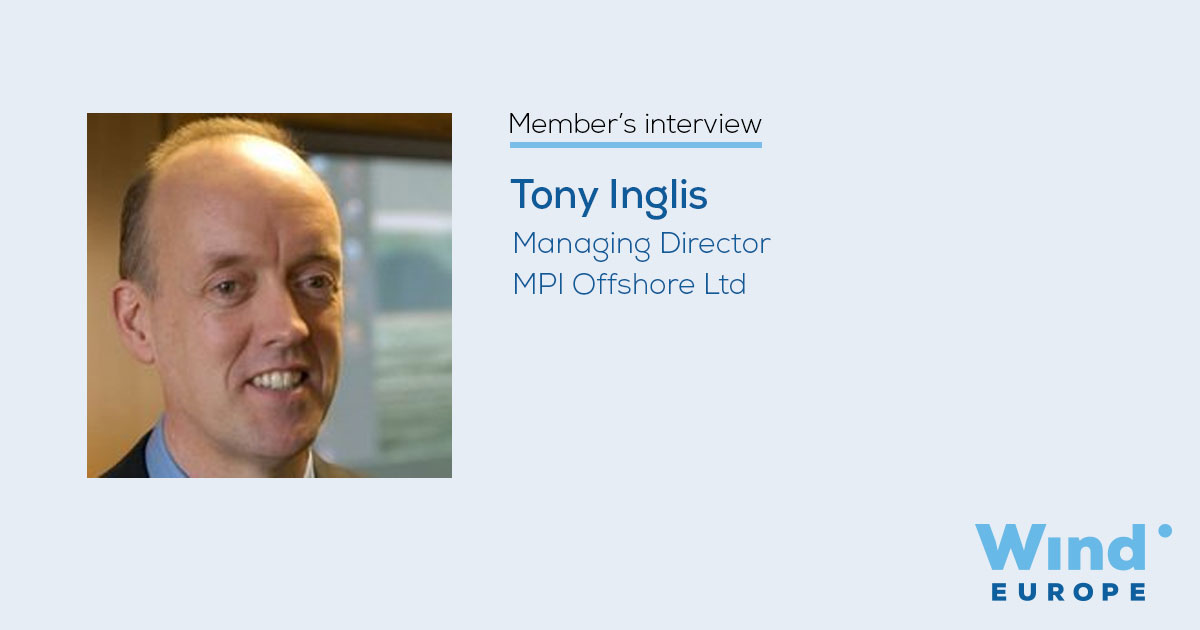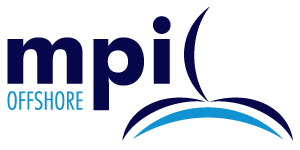Members' interviews
Interview with Tony Inglis, Managing Director of MPI Offshore Ltd

1 March 2018

What have been the most significant developments for MPI in recent years?
There have been a number of significant recent developments from our perspective. Perhaps the largest is the attainment of subsidy-free developments in Europe. Subsidy levels for wind have been dramatically reducing in recent years across continental Europe and the UK. This has been made possible, in no small part, by increasing the unit-size of turbines. As that process evolves and wind becomes a genuinely economical replacement for other less-green forms or energy, governments and utility investors should be able to drive a much higher level of wind-energy development. This bodes well for growth opportunities for the entire supply chain.
Also significant to MPI has been the increasing use of a more collaborative contracting model among a number of developers. Earlier engagement and longer-lead preparation with installers bring significant benefits to developers and produce much more successful projects. This increase in early cooperation is a welcome change in the contracting environment, and we hope to see more of it.
We can expect rapid technological developments in offshore wind in the coming years (larger turbines, etc.). What opportunities and challenges will this bring for MPI Offshore?
The recent growth in turbine size means higher payloads must be carried by vessels and the heavier components and taller towers require taller, stronger lifting equipment. Pushing the boundaries on water depth for piled foundations also generates heavier lift requirements and taller jack-up vessel leg requirements.
We aim to ensure our MPI jack-up vessel capability keeps pace with these rising installation loads and heights. The MPI Resolution has already had leg extensions, and these modifications are also planned for the MPI Adventure and MPI Discovery in the near term. We also expect significant crane upgrades in order to enable the taller nacelles to reach the larger towers.
For significantly larger turbine sizes (10 – 20 MW), MPI has spent considerable effort developing and model-testing a new vessel design called the MPI Endeavour, to economically transport and install turbine equipment in this range and with enhanced weather operability.
What issues do you face with differing regulations in different market (crew certificates, waste disposal, health and safety regulations, and so forth) ?
The goal with varying regulatory environments is to try and maintain vessels and systems to the highest regulations possible, thus providing a default standard which covers all bases. This approach of course requires vigilance to ensure costs resulting from satisfying one region do not disadvantage competitiveness in another. We expect to see a continuous rising of health, safety and environmental standards.
What are the challenges you (could) face when carrying out cross-border activities?
Often cross-border challenges are local-content based (the US Jones Act, for example). For MPI, we find the most significant challenge across borders is in regions currently in the earlier stages of wind farm development (outside Europe). In such regions, there is often a lack of local market maturity to provide a pipeline of developing projects.
Most of the world’s jack-up wind turbine equipment is still European-based, so sailing to south-east Asia or the US carries a high transit cost and, without a sustainable ongoing work volume, a cost of return transit. Remaining in a remote region on speculation of further work is only viable if there is a considerable and real backlog of projects.
After 2023 there’s a lack of visible commitment to offshore wind by EU Member States. What are your thoughts on how to overcome this?
The arrival of zero or near-zero subsidy levels should help renew the impetus of many EU States. There do seem to be great differences between the infrastructure and subsidy/award systems in each state. Given the existence of the European Union, it is interesting that there is not a bit more unity of approach across all Member States. Despite those differences, there seems to be a uniformly growing awareness and desire for more renewable energy by the populace of each State, and most State leaders recognise this.
Finally, floating offshore wind has been an exciting development in recent years. Will MPI Offshore be getting involved in this?
At MPI we are watching the trials in floating wind with interest. At the same time, the upward growth in overall turbine size has been accompanied by an upward growth of conventional foundations or jackets, and this seems to have some way left to go. Simply put, the economics continue to favour ground-foundations. In recent years there has been a lot of activity in multi-leg jacket foundation designs.
However, designs for monopiles, and the relative ease of handling and installation that comes with them, means that most projects continue to push and extend monopile designs. Floating systems may be essential in significantly deeper waters, of course, but the demonstrated ability to keep upscaling ground foundations is likely to remain something of a buffer in favour of ground foundations for a long time yet.


